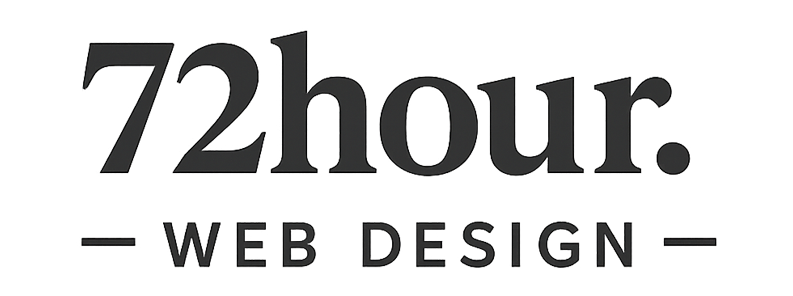
In today’s digital age, having an efficiently managed website is crucial for small business success. Rachel Martinez runs ‘Clean & Clear Spaces,’ a thriving cleaning service in Austin, Texas, and like many entrepreneurs, she seeks to streamline her operations and enhance her business’ online presence. For small business owners like Rachel, learning effective website management can mean the difference between barely keeping up and thriving with more time for strategic growth and a better work-life balance.
Understanding the Importance of Website Management
A well-maintained website is more than just a digital storefront; it’s a cornerstone of your brand’s reputation and customer trust. For entrepreneurs like Rachel Martinez, having a reliable and professional web presence helps establish credibility in a competitive market while ensuring her cleaning service stands out. Website management ensures that visitors have a seamless and pleasant browsing experience, encouraging them to engage and become loyal clients.
Effective website management enhances user experience by ensuring fast loading times, easy navigation, and visually appealing layouts. Additionally, implementing strong SEO strategies can boost website visibility, helping small businesses appear more prominently in search results, ultimately driving more traffic and potential conversions.
Regular updates and fresh, dynamic content contribute significantly to a business’s credibility and relevance. Comparing static content versus dynamic content can help highlight the benefits:
| Aspect | Static Content | Dynamic Content |
|---|---|---|
| Engagement | Remains the same over time, less engaging | Regularly updated with latest news, blogs, or events |
| SEO Benefits | Limited SEO benefits | Boosts SEO with keywords and recent activity |
| Trend Relevance | May not reflect current trends | Resonates better with returning visitors |
For small business owners, dynamic content keeps the website engaging and ensures it remains competitive in the ever-evolving online world.
Essential Tools for Efficient Web Management
Efficient website management can be streamlined with the use of the right tools. Basic scheduling tools, for instance, automate updates and posts, ensuring that content remains fresh even during peak business periods. Content management systems (CMS) like WordPress provide an intuitive interface for managing content, while analytics tools offer insights into website performance and visitor behavior, empowering business owners to make data-driven decisions.
Here are some recommended analytics tools small businesses can benefit from:
- Google Analytics – Track website traffic and user interactions.
- HubSpot Analytics – Gain insights into customer journeys and conversions.
- Crazy Egg – Analyze user behavior with heatmaps and click reports.
- SEMrush – Monitor keyword performance and refine SEO strategies.
Automation tools help reduce administrative workload by scheduling tasks, tracking updates, and even optimizing website layouts. These tools are particularly useful for business owners like Rachel, who already juggle tight schedules.
Utilizing efficient web management tools not only eases the operational burden but also enables consistency in performance. This can significantly impact the overall productivity of small businesses, allowing entrepreneurs to focus more on strategic phases and growth initiatives.
Designing a User-Friendly Website
Turning your website into a user-friendly platform is key to retaining visitors and converting them into leads. Incorporating intuitive design principles ensures seamless navigation and keeps visitors engaged. For example, simplifying layouts and prominently displaying contact information make it easier for prospects to connect with your business.
Balancing aesthetics with functionality is another critical aspect. While visually appealing design draws attention, functionality ensures usability. Rachel, for instance, focuses on mobile responsiveness to reach clients who browse her cleaning services on their mobile devices. With growing mobile users, a mobile-friendly site is indispensable for accessibility.
Moreover, adopting accessibility guidelines, such as providing alternative text for images and ensuring clear fonts, creates an inclusive experience catering to all visitors, including those with disabilities.
Emphasizing user-centric design not only improves overall satisfaction but also increases the chance of retaining customers longer, optimizing for higher interaction rates, which ultimately translates to increased business potential.
Leveraging Social Media to Boost Website Engagement
Integrating social media platforms with your website is a powerful strategy to attract more visitors and enhance engagement. Platforms like Facebook and Instagram offer opportunities to share engaging content, drive audience traffic to your site, and encourage interactions. Rachel uses these platforms effectively to build brand awareness for her cleaning business while linking back to her website to convert visitors into leads.
Social media metrics also serve as a valuable resource for informing website content strategy. For instance, analyzing which posts resonate most with your audience helps in crafting corresponding content for your site.
Tips for using Facebook and Instagram effectively:
- Post visually appealing images of your services, such as before-and-after photos for cleaning businesses.
- Encourage customers to leave comments or share your posts to increase reach.
- Utilize Instagram Stories to provide quick, engaging updates on recent projects or promotions.
By strategically linking social media with your website, you not only enhance engagement but also ensure a unified brand message across multiple platforms, creating a seamless experience for audiences everywhere.
Protecting Your Website and Customer Data
As online threats become increasingly common, ensuring the security of your website and customer data is a priority for small business owners. Protecting information with secure payment gateways not only safeguards customer trust but also protects your reputation.
Regular software and plugin updates are essential for preventing vulnerabilities from being exploited by attackers. Business owners like Rachel can minimize risks by adopting cybersecurity basics, such as enabling firewalls, using strong passwords, and implementing two-factor authentication.
Educating staff is equally important. Training employees to recognize phishing attempts and securely handle customer data reinforces a culture of security across your business.
With rigorous security measures, business owners can build a safer online environment, which in turn enhances customer confidence and engagement in the digital offerings of their brands.
Developing a Content Strategy to Highlight Your Brand
Creating compelling content that aligns with your brand identity is a great way to engage your target audience. For instance, Rachel may focus on posting cleaning tips, testimonials, and service showcases to resonate with her customers. A well-organized content calendar ensures consistent posting and allows you to plan campaigns in advance.
SEO-driven content further amplifies your online presence. By embedding relevant keywords such as “efficient web management” and “small business website,” businesses can improve their search engine rankings. Encouraging customer reviews and testimonials also drives trust and attracts new clients.
Platforms to gather and showcase reviews include:
- Google My Business
- Facebook Reviews
- Yelp
- Trustpilot
By developing a robust content strategy, small business owners wield an effective tool to stand out in competitive industries, attract customers, and grow their brand reputation.
Frequently Asked Questions
Why is website management important for small businesses?
Website management is crucial for small businesses because it enhances user experience, improves customer trust and brand credibility, and boosts visibility through SEO, increasing traffic and potential conversions.
What benefits does dynamic content offer over static content?
Dynamic content is regularly updated, more engaging, offers greater SEO benefits, and resonates better with visitors compared to static content, which remains unchanged and might not reflect current trends.
Which tools can help with efficient web management?
Tools like content management systems (CMS) such as WordPress, and analytics tools like Google Analytics, HubSpot Analytics, Crazy Egg, and SEMrush can streamline web management by providing insights and automating updates.
How does a user-friendly website affect visitor retention?
A user-friendly website with intuitive design and functionality retains visitors by providing seamless navigation and engaging experiences, increasing the likelihood of converting them into leads.
How can social media boost website engagement?
Integrating social media with your website can drive traffic, build brand awareness, and encourage interactions by sharing engaging content and linking back to your website, increasing audience reach.
What security measures are important for protecting a business website?
Important security measures include using strong passwords, enabling firewalls, implementing two-factor authentication, regularly updating software and plugins, and training staff on cybersecurity basics.
How can a content strategy enhance a small business brand?
A content strategy that aligns with brand identity and incorporates SEO-driven content can engage target audiences, improve search engine rankings, and highlight customer testimonials to enhance trust and attract new clients.

